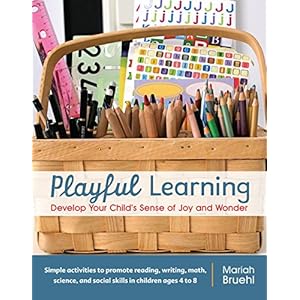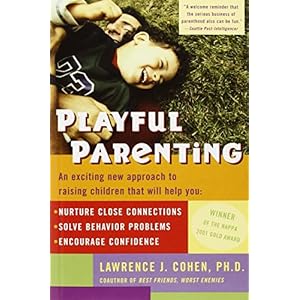
Play is the fundamental learning mode and emotional outlet of childhood. But is all play the same?
Turns out, kids need to engage in a various types of play in order to support their emotional, physical, and intellectual development. Parents can support their child’s development and learning by encouraging various forms of play.

What is Play?
Play is an essential and critical part of all children’s development. Play is how children learn to socialize, to think, to solve problems, and most importantly, to have fun as an emotional outlet.
Play can be defined as a pleasurable activity that is actively engaged in on a voluntary basis, is intrinsically motivated and contains some non-literal elements.
Why is Play Important?
Lawrence Cohen, in his book Playful Parenting, states that there are three main purposes of play.
- Play is a fundamental way to learn, allowing children to try on adult roles and master new skills.
- Play serves a child’s immense need for attachment, affection, and closeness.
- Play helps children recover from emotional distress. According to Cohen, “By playing out [a tough situation], emotional healing can take place.”
Why Do Kids Need Different Types of Play?
 Working in the 1930s, researcher Mildred Parten defined play as six stages which mirror children’s social development.
Working in the 1930s, researcher Mildred Parten defined play as six stages which mirror children’s social development.
Unlike Jean Piaget who saw children’s play in primarily intellectual or cognitive developmental terms, Parten emphasized the idea that learning to play is learning how to relate to others.
As children grow and develop, play evolves. Certain types of play are associated with specific age groups, although all types of play occur at any age.
Play is how children interact and explore the world, and different types of play are needed to fully engage a child’s social, physical, and intellectual development.
Parten’s Social Stages of Play
1. Unoccupied play
From birth to about three months, your baby is busy in unoccupied play. Infants appear to make random movements with no clear purpose, but this is the initial form of playing.
2. Solitary play
From three to 18 months, children will spend much of their time playing on their own. During solitary play, children do not seem to notice other kids sitting or playing nearby. They are exploring their own world by watching, grabbing and touching objects.
Solitary play begins in infancy and is common in toddlers. However, it is important for all age groups to have some time for alone play.
3. Onlooker play
Onlooker play happens most frequently during the toddler years. A child watches other children play while learning how to relate to others and acquiring language through observation and listening.
Although children may ask questions of other children, there is no effort to join the play. This type of play usually starts during toddler years but can take place at any age.
4. Parallel play
From the age of 18 months to two years, children begin to play side-by-side other children without any interaction.
Parallel play provides your toddler with opportunities for role-playing such as dressing up and pretending. It also helps children gain the understanding of the idea of property ownership, including the concept of what is “theirs” and what belongs to “others.”
They begin to show their need of being with other children their own age. Parallel play is usually found with toddlers, although it happens in any age group.
5. Associative play
When your children are around three to four years of age, they become more interested in other children than the toys. Children start socializing with other children.
Associative play helps your preschooler learn the do’s and don’ts of getting along with others. Children learn the art of sharing, language development, problem-solving skills and cooperation.
During associative play, children within the group have similar goals. However, they do not set rules and there is no formal organization.
6. Social play
Children around the age of three are beginning to socialize with other children. By interacting with other children in play settings, a child learns social rules such as give and take and cooperation.
Children begin to share toys and ideas, and follow established rules and guidelines. They are beginning to learn to use moral reasoning to develop a sense of values.
[sc:inlinead ]Categories of Play
Play can also be described by the types of activities children are engaged in during play.
7. Motor – Physical Play
When children run, jump, and play games such as hide and seek and tag, they are engaging in physical play. Physical play offers a chance for children to develop muscle strength, coordination, and exercise. Children also learn to take turns and accept winning or losing.
8. Constructive Play
In this type of play, children build and create things. Constructive play starts in infancy and becomes more complex as your child grows.
The simple act of a baby putting his toes in his mouth to see how they feel and taste is a type of physical play.As a toddler, children begin building with blocks, playing in sand, and drawing.
During constructive play, children explore objects, discover patterns, and problem solve, to find what works and what does not. Children gain confidence manipulating objects and practice creating ideas and working with numbers and concepts.
9. Expressive Play
Children learn to express feelings and emotions during expressive play.
Art materials such as crayons, paints, and play dough facilitate expressive play. Beanbags, scarfs, and musical instruments are other sources of toys. Children develop creativity and symbolic communication through expressive play.
10. Fantasy / Dramatic Play
Children learn to create and imagine beyond their world during Fantasy Play. They assume adult roles and learn to think in abstract ways.
Children stretch their imaginations and use new words and numbers to express concepts, imaginations and historical concepts. Children can re-enact situations, experiment with languages, and learn to express emotions during fantasy play.
11. Cooperative Play
Cooperative play begins in the late preschool period. The play is organized by group goals and established rules. There is at least one leader, and children are definitely in or out of the group.
Children are moving from a self-centered world to an understanding of the importance of social interactions and rules. Part of this development occurs when they learn games such as Tag, Follow the Leader, Simon Says, and team sports.
Games with rules teach children the concept that life has rules that everyone must follow.
12. Virtual / Digital Play
When children play electronic video games or computer-based learning programs, they are engaging in a form of solitary play. There is no social interaction or consequences. Virtual play negatively impacts a child’s executive functioning and social skills, including eye contact and attention span.
Parents Role in Play
Parents have an important role in play. You can encourage play by providing interesting materials that promote exploration and learning. Playing with your child helps him learn how to manipulate toys and other play materials by modeling your actions.
[sc:bottomad ]
READ MORE…

by Mariah Bruehl
Ways to harness a child's natural curiosity and channel it into a love of learning.

by Lawrence J. Cohen
Have you ever really observed what goes on when your children play? Cohen demonstrates that playful interaction with children is a vital parenting skill.
REFERENCES…
Bailey, C. M. (2006). Learning through play and fantasy, EC 1297E, Corvallis, OR Oregon State University.
Bodrova, E. & Leong D. (2005), The importance of play, why children need to play. Early Childhood Today, 20 (3), 6-7.
Ginsburg, K. R. (2007). The importance of play in promoting healthy child development and maintaining strong parent-child bond, Journal of American Academy of Pediatrics, 119 (1), 183-185.
Parten, M (1932). Social participation among preschool children. Journal of Abnormal and Social Psychology 28 (3): 136–147





















